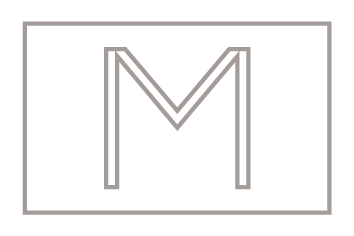Picking the right analogue Leica compact camera: A buyers guide
As I already owned a digital Leica, I knew that my first analogue compact camera should be a Leica.
As there are several different camera models, I would recommend looking for an overview of all available camera types. There are several Leica family trees out there, including posters, but for analogue compacts and point and shots I really like the overview on the Leica Wiki page - it doesn't show the latest cameras yet, but it's great to see Leica's analogue history at a glance. My favourite feature is that you can get detailed information, often including the camera manuals, by clicking on the camera types listed.
As a second step, I like to check online second-hand shops and official resellers to see which camera types are available and how many of each type there are. When I was looking for an analogue Leica compact camera, I discovered many Leica AF-C1 models on private second-hand sites. If there are a lot of cameras of one type, it could be an indication that they have been sold in large numbers, or that the owners are not entirely happy and want to get rid of them, perhaps replacing them with another model.
As a next step, I would go to Youtube and watch several reviews, including sample pictures, to get a better understanding of each camera model.
Choosing between the Leica AF-C1, Leica C1, Leica C2 and Leica C3
If you look at this table of compact fixed-lens mini film cameras, you will find two rows of models that fit into this scheme. As I already own a Minolta Riva Mini, which is very similar to the Leica Mini series, I decided to concentrate on the first row - in particular the Leica AF-C1, C1, C2 and C3, which all sound very similar.
Leica AF-C1
The Leica AF-C1 was officially sold between 1989 and 1991. It is a rather chunky camera, weighing 345g without batteries - some say it should not even be in the mini category as it is quite big and heavy. Visually, the body reminds me of wavy chips because of its thin rills.
There are similarities to the Leica Mini: There's also a Minolta version of the Leica AF-C1. The Minolta AF-Tele Super was launched in 1988 and its design was the basis for the Leica AF-C1.
The AF-C1 comes with one interchangeable lens: 40mm f 2.8 and 80mm f 5.6. I must admit that I have never seen or heard of a dual-focus lens before. The second focal length is created by switching on a 2x teleconverter. According to online reviews, this camera does not come close to Leica's high and usual quality standards - which confirms my theory as to why there are so many AF-C1 on the market. In particular, the image quality of the second focal length (80mm) is said to be quite poor, photographers recommend using only the 40mm.
Leica C1, Leica C2, Leica C3
Coming to the Leica C1, C2, C3 types, I would have assumed that the latest version, the Leica C3 released between 2002 and 2005, would be the best option, but it turned out that the Leica C1 (officially sold between 1999 and 2001) is also a great deal for me. All three have a "Leica Vario Elmar APSH lens", which basically means a zoom lens starting from f3.5. The Leica C1 has the widest zoom lens 38-105mm f4 - f10.5, followed by the C3 28-80mm (f3.6-7.9) and the C2 (35-70mm f4.6-8.6).
The C1 and C3 are similar in size, although the C1 is slightly lighter at 260g compared to the C3's 270g (weight without batteries). The C2 is slightly smaller than the C1 and C3 and is also the lightest with 240g (also without batteries).
The Leica C2 and Leica C3 were launched at the same time (from 2002 to 2005) with two different target groups in mind. The C2 was promoted as a family camera for great portraits and group shots - especially for leisure, parties and family time - while the C3 was promoted for architecture, landscape and city shots due to its wider lens (28mm) and starting focal length of 3.6, which also made it possible to take decent indoor shots. The C1, with its widest zoom lens, was promoted for travel photography. On the promotional images you can see a young couple on a boat, with the man pointing at something very far away, suggesting that you can even take pictures of things, presumably sights, from very long distance. There are also some couple and portrait shots, showing the versatility of the camera.
Visually, all three come in an aluminium body and look quite similar, with a few visual variations. The Leica C1 stands out a bit, as it is available in silver (18080) and black (18081). It's also the only one with a Leica engraving on the top plate, similar to the Leica C11 (also produced in 1999, 23-70mm f4.8-9.5) and other analogue Leica M models. The C1 and C2 also came in a gift set, which included a soft leather pouch, film, album and pen.
The Leica C1 is currently available from private resellers for 200-400 Euros, the Leica C2 for 250-400 Euros and the Leica C3 for 350-500 Euros (prices from sellers in Europe, 2025).
Recap
With the detective work done, it's time to choose a camera. I chose the Leica C1 because I really like the zoom option on my analogue compact camera, as I usually only shoot with a prime lens. I also wanted to get the black version with the engraved Leica logo – according to me it looks really nice. Of all options mentioned, I would have chosen the C3 as my second pick.
If you are looking for a slightly more sophisticated Leica analogue compact camera, the Leica Minilux and Minilux Zoom would be better options, as you can make your distance settings manually - but be aware that not only is the camera more upmarket, the price is too.
Pictures of my Leica C1 camera
Sample pictures of the Leica C1
For some sample pictures of my Leica C1 please check out my previous blog posts:






























